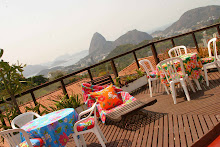Barra da Tijuca: Commonly dubbed 'the Miami of Rio,' this beach, set off by towering highrises, has it all: white-sand beaches, calm blue water, and a relaxed atmosphere. The barrio is being rapidly developed, so enjoy it now, before Ipanema's hoardes head west. To get there, take the S-20 bus (regular fare) running from Centro along the coast.
Recreio: Stay on the bus a little longer, and you'll wind up in Recreio, Barra's rough sibling, with fewer highrises and rougher waves. A huge rock (climbable, for great views of the coast on either side) juts out from the beachfront.
Prainha: This little gem, a kombi ride (or a hitchhike if you're feeling adventurous) away from Recreio, is absolutely stunning. The waves are quite large here, too, so you can play in the ocean, climb and chill on the beach's huge rocks, or spread your towel on the soft sand without interruption from obnoxious beach salesmen. You can also take a walk through the national park (lovely trails, disgusting bathrooms) before catching the easy public transportation home.
Niteroi: Cariocas will tell you that the best thing about neighboring Niteroi is its stunning view of Rio de Janeiro across the water. In truth, however, Niteroi is culturally stimulating, visually enthralling, and only a R$2 ferry ride away from Rio's Praca XV. Though Niteroi is famous primarily for its Oscar Niemeyer-designed other-worldly contemporary art museum, it also boasts an impressive number of astounding beaches. The best (and farthest) is Itacoatiara Beach, reached by taking a no.38 bus from the ferry dock.













